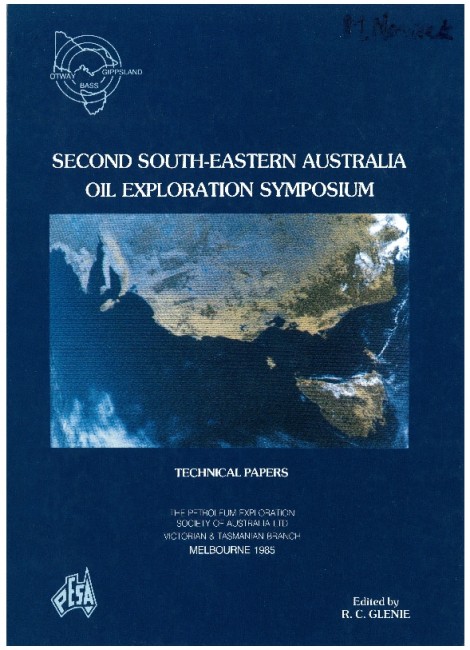Publication Name: Second South-Eastern Australia Oil Exploration Symposium - Technical Papers
Authors: J.M. Bodard and V.J. Wall
Date Published: December 1986
Number of Pages: 29
Reference Type: Book Section
Abstract:
Examination of sonic, density and neutron log-derived porosities for Latrobe Group sandstones in fifty-two offshore Gippsland Basin wells reveals three zones of variation in vertical porosity profiles: 1) an upper zone (up to 600 m thick), characterised by high (24-30%), though somewhat variable average porosities, which exhibit little decrease with depth, 2) a middle zone (between 150 m and 1100 m thick), characterised by a decline in porosity with depth, where regression rates vary between 0.8 porosity units (p.u.)/100 m and 3.6 p.u/100 m, and 3) a lower zone featuring comparatively low (8-15% ), though somewhat variable average porosities, which like the upper zone do not decline markedly with depth. The threezone pattern is best developed nearer the northern to western margins of the central-deep basin area, notably in the deeper-penetrating Wirrah, Whiting, Barracouta, Snapper, and the west-centrally located wells. Distinctive zones are less evident in wells whichtest only the top-Latrobe interval and in the southwestcentral parts of the basin, for example around Bream
and Luderick.
Regardless of burial depth, the upper porosity zone is present where thick mature strandplain-coastal barrier sandstones occur below a regional seal (the Latrobe Surface). The top-Latrobe zone represented a
major aquifer during much of the post-Latrobe basinal history. High fluid/rock ratios at comparatively low
temperatures may be responsible for porosity preservation/rejuvenation. Post-Latrobe burial plays a lesser role.
In the middle porosity zone, variation in rates of porosity decline are related to lithofacies and/or geothermal
gradient. Sandstones in this zone are typically dirtier (less mature) than in the upper zone. Sandstone body interconnectivity (or the lack thereof) appears to have a major influence on porosity variation and trends in the middle zone. Porosity reduction in this zone relates to compaction, quartz overgrowth cementation and kaolinite alteration/precipitation. At more advanced stages, local quartz solution-reprecipitation and illite alteration/precipitation are significant in the lower porosity zone.
This lower zone is generally made up of matrix-rich alluvial sandstones in sand-dominated sections of wells situated along the northern to southwestern margins of the basin. These sandstones probably had lower initial
porosities than those comprising the upper zone, especially in deeper sections where lithic components are
abundant. Areas which exhibit a well developed lower zone occurring at relatively shallow depths are characterised by high geothermal gradients and advanced diagenesis. Limited porosity decline with depth may
reflect lower fluid fluxes resulting from decreased permeability.


